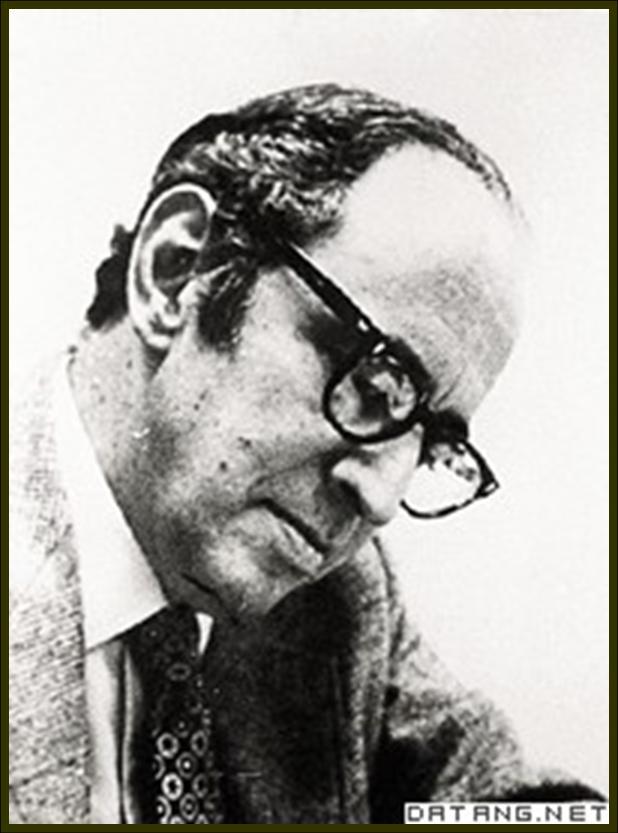Paradigm范式
Paradigm Shifts范式转变
Paradigm韦氏词典:1.Example,Pattern的同义词,源自古希腊语paradeigma;2.1962年以前是英语语法学、修辞学专业词语;3.1990年,韦氏词典收入“范式”。
韦氏词典Paradigm的最新定义:a philosophical and theoretical framework of a scientific schoolor discipline within which theories,laws, and generalizations and the experiments performed in support of them are formulated;broadly:a philosophical or theoretical framework of any kind.
 Thomas Samuel Kuhn托马斯·库恩
Thomas Samuel Kuhn托马斯·库恩
(1922—1996)
Kuhn has made several important contributions to our understanding of the progress of knowledge.
Kuhn's 1962 book The Structure of Scientific Revolutions was deeply influential in both academic and popular circles,introducing the term "paradigm shift," which has since become an English-language staple.
Newtonian mechanics is the first successful paradigm in science.
Quantum mechanics is the most successful paradigm in science.
为什么Plato、Aristotle、Euclid、Copernicus、Bacon、Galileo、Kepler、Descartes、Newton、Maxwell、Einstein、Dirac是最顶级的科学家?因为他们开创了新的科学范式!
Kuhn argued that science does not progress via a linear accumulation of new knowledge,but undergoes periodic revolutions,also called "paradigm shifts",in which the nature of scientific inquiry within a particular field is abruptly transformed.In general, science is broken up into three distinct stages:
Prescience which lacks a central paradigm;
normal science:scientists attempt to enlarge the central paradigm by "puzzle-solving".Guided by the paradigm,normal science is extremely productive:"when the paradigm is successful, the profession will have solved problems that its members could scarcely have imagined and would never have undertaken without commitment to the paradigm."During the period of normal science,the failure of a result to conform to the paradigm is seen not as refuting the paradigm,but as the mistake of the researcher, contra Popper's falsifiability criterion.
revolutionary science:As anomalous results build up,science reaches a crisis, at which point a new paradigm,which subsumes the old results along with the anomalous results into one framework,is accepted. This is termed revolutionary science.
科学范式转变完成的主要标志是旧的axioms被放弃和新的axioms被接受。
Paradigm shifts in the scientific revolution科学革命时期的范式转变 :
1.The transition in cosmology from a Ptolemaic cosmology to a Copernican one.从托勒密地心体系到哥白尼日心说的范式转变。
2.The transition in mechanics from Aristotelian mechanics to classical Mechanics.从亚里斯多德力学到古典力学的范式转变。
Paradigm shifts tend to be most dramatic in sciences that appear to be stable and mature,as in physics at the end of the 19th century.In 1900,Lord Kelvin famously stated:There is nothing new to be discovered in physics now.All that remains is more and more precise measurement.In 1900,Max Planck started the quantum mechanical snowball,which initiated the paradigm shift from classical physics to modern physics.In 1905,Albert Einstein’s paper on the special theory of relativity accomplished the paradigm shift between the Newtonian mechanical worldview and the Einsteinian relativistic worldview.In 1925,Heisenberg initiated the paradigm shift from classical mechanics to quantum mechanics.In 1930,Dirac accomplished the paradigm shift between classical mechanics and quantum mechanics.
在量子物理学领域,狄拉克的《量子力学原理》完成了量子力学的范式,也同时开启了量子场论的新范式。从这个角度上说,狄拉克足可比肩牛顿、爱因斯坦。


